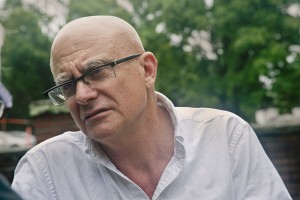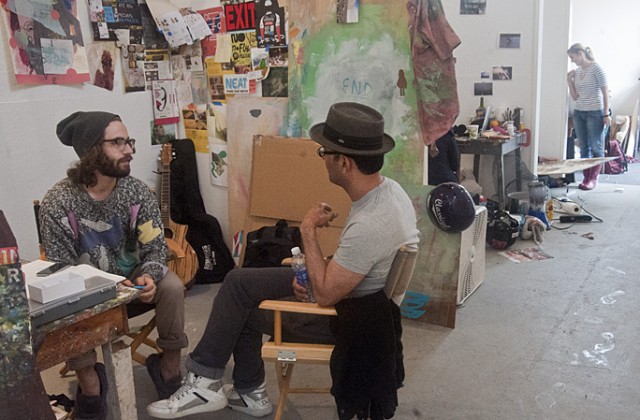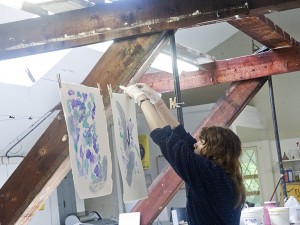Yale Summer School of Art Celebrates Its 65th Anniversary
Director Sam Messer is making plans for the future
By Ruth Melville
This summer marked the 65th year of the Yale Summer School of Art and Music. The art program, though less visible to the public than the music school with its popular and well-regarded Norfolk Chamber Music series, has an equally impressive track record in training young artists for professional careers.

Sam Messer, the school’s director, is proud of what the program offers: “There are not many places like this.”
Each year the program admits 26 students, who are all undergraduates between their junior and senior year. Each student receives a fellowship that covers tuition and room and board. Students in the program also get their own studios in the Art Barn.
Although a few students are from Yale, the rest come from all over the country, and even abroad. The majority of the students attend liberal arts schools, and the opportunity the school offers for them to meet and talk not only with faculty but also with peers from other schools is, Messer says, unique. “This cross-pollination of ideas is something many of the students have not been exposed to before. It’s the only program I know of where undergraduates then go back to their home schools, taking what they’ve learned with them.”
The program has four full-time faculty members, who cover four disciplines: photography, painting, drawing and printmaking. This year’s faculty members were Messer, Colleen Asper, Sarah Anne Johnson and Didier William.
The core faculty is supplemented by visiting artists and lecturers throughout the session. Visitors this summer included Ahmed Alsoudani, a student at the school in 2004 and a native of Iraq who has twice represented Iraq at the Venice Biennale; Josephine Halvorson, a painter who was a student at the summer school in 2002; Robert Storr, formerly a curator at the Museum of Modern Art in New York and now dean of the Yale School of Art; and Norfolk photographer Michaela Murphy, who was the photography teacher at the school from 1983 to 1985.
Over the years the school has welcomed many distinguished visiting artists, including Buckminster Fuller, Willem de Kooning, Helen Frankenthaler, Romare Bearden, Mel Bochner and Philip Guston. Robert Bowden, an artist whose daughter Lisa Carter lives in Norfolk, was a student here in 1952 when the visiting artists were John Cage, Josef Albers and the architect Louis Kahn. Bowden remembers them all spending hours talking with the students: “That six-week experience was the best part of my college education.”Many of the students have gone on to distinguished careers in art. The sculptor Eva Hesse attended the art school in the 1957, while she was studying at Cooper Union, and Helen Frankenthaler and Robert Mangold were students together in 1959. Chuck Close, Brice Marsden and Vija Celmins all met each other during their time in Norfolk.
The school is eager to share in the life of the town. During the summer Messer offers free drawing classes to the community twice a week, on Tuesday nights and Saturday mornings, and this August he’s going to teach an intensive drawing workshop. The visiting lecture series is also open to the public, but Messer admits that “getting people to come to lectures is hard.” Next year he hopes to invite the author, journalist and food activist Michael Pollan, whose wife, Judith Belzer, was a student in the art school in 1983.
The art school needs to raise money to maintain the Art Barn and, ideally, to erect a new building. The long-term goal is to have an endowment. But donations are not easy to come by in this economic climate, and people are more used to donating to museums and music groups than to art schools.
Messer is proud of what the art school offers its students. “There are not many places like this, with students making things, learning, talking to people.” Messer says that all the artists who have studied in Norfolk emphasize the same thing: “This is the place they realized what they were going to do with their lives.”
Photos by Bruce Frisch.


